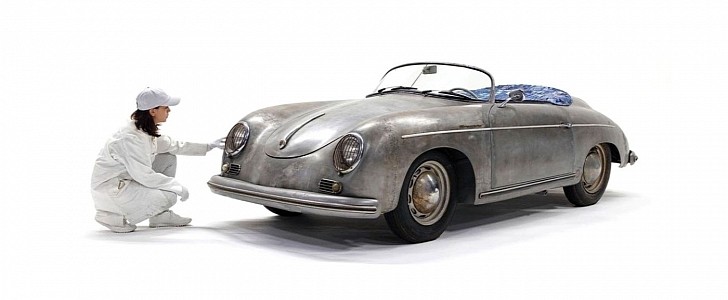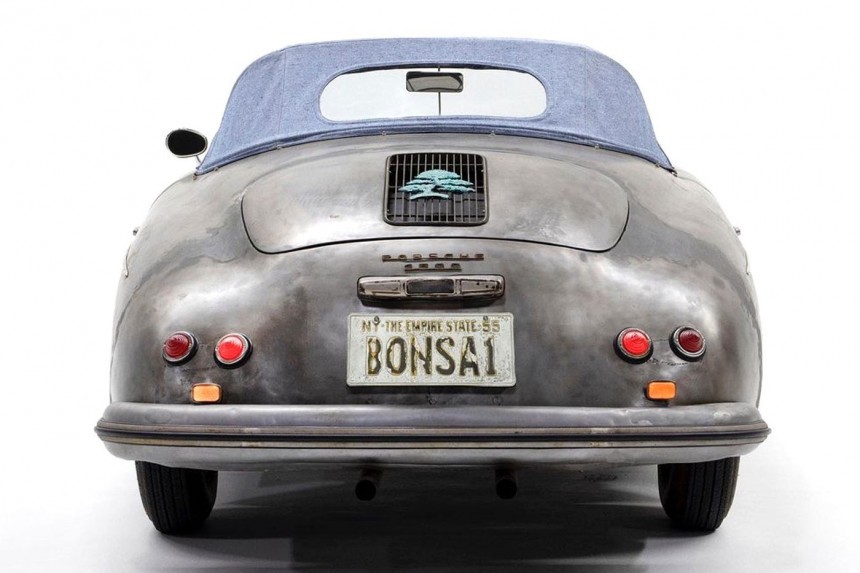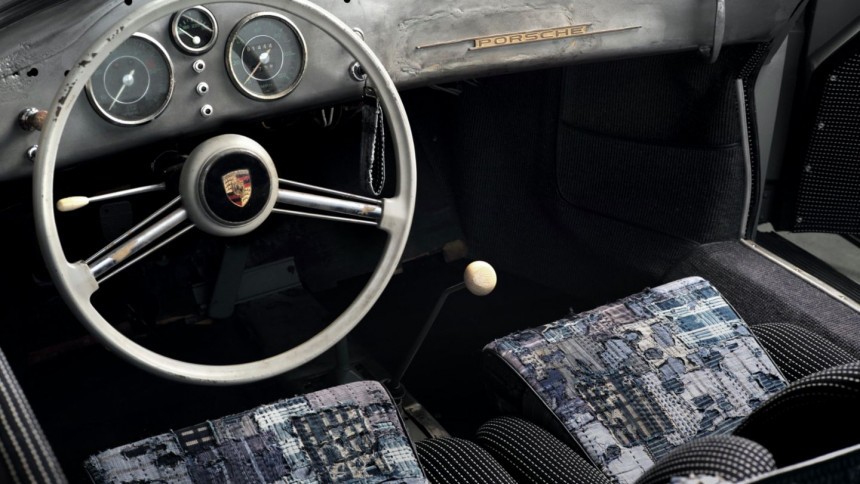Since cars are no longer just a means of transportation or a social status tool but also a personal statement or expression, we’ve seen many artists transforming regular cars into stunning works of art, true head-turners in the urban landscape.
We know that hardly anyone can escape the charm of a classic Porsche, and American artist Daniel Arsham is no exception. Actually, his name has come to be closely associated with Porsche, as he previously revealed art cars like the damaged Porsche 911s or the custom Porsche 930A.
Having spent his childhood years drawing sneakers, cameras, and different Porsche models, Daniel Arsham became passionate about the cars made by the Zuffenhausen-based brand, and they have become a source of inspiration for his artwork.
This time around, he is showing the world the Porsche 356 “Bonsai,” an art car inspired by the Japanese aesthetic concept Wabi Sabi, a worldview that promotes acceptance of impermanence and imperfection. This new project is based on his original 1955 Porsche 356 Speedster, which has been reconceived with a focus on embracing the natural age and wear of the nearly 70-year-old car.
“The 356 sits in such an interesting position within the Porsche catalog as the starting point for the heritage brand. The nearly 70-year-old vehicle contains the roots of the modern Porsche brand that we know and love in the purest form,” says the artist.
The 356 Bonsai is a joint effort between the artist and John Willhoit from Willhoit Auto Restoration and Matthew Ammirati from Bridgehampton Motoring Club for the exterior and technical works, as well as fashion curator POGGY and BerBerJin director Yutaka Fujihara for the interior design.
Arsham spent the last two years working on his latest project, stripping the car back and laying bare the raw materials that make it up, both inside and out, to artistically illustrate the acceptance of “imperfection” and the natural passage of time.
To get to the final exterior appearance you see in the gallery, Arsham stripped all of the paint from the Porsche car, removing not only the bodypaint restorations but also the original finish and revealing the natural wear of the original components with all of the welds and pit marks. Only a layer of linseed oil protects the raw brushed metal from the elements.
A patinated bronze 3D cast that takes the shape of a Bonsai tree adorns the rear engine grille, explaining the name Arsham chose for the art car.
The patinated exterior would not have been complete without similarly worn-out elements, so the artist did his best to find all-original components for the rest of the exterior as well. As such, the headlight covers look equally tattered, and the car also features a vintage “Bonsai” New York license plate.
The interior continues the Wabi Sabi principles through the use of Japanese textiles. In fact, the artist used a combination of indigo dyed boro, Sashiko stitched canvas, and Japanese denim produced in Okayama throughout the open-top cabin, all of them made to age well with continued usage.
“Throughout my career, I have looked to Japan as a source of inspiration for their love and dedication to craft. These sensibilities were the base for the Bonsai 356. We produced all textiles in Japan using traditional craftsmen,” Arsham explains.
The Porsche 356 Bonsai may seem worn inside and out, but it’s fully drivable, with all technical components undergoing restoration. Even the original numbered engine has been restored to its original off-the-factory state.
With less than 4,000 Porsche 356 Speedsters currently in existence, the 356 Bonsai art car is truly unique, and Porsche Japan will exhibit it in Tokyo at the end of this year.
Having spent his childhood years drawing sneakers, cameras, and different Porsche models, Daniel Arsham became passionate about the cars made by the Zuffenhausen-based brand, and they have become a source of inspiration for his artwork.
This time around, he is showing the world the Porsche 356 “Bonsai,” an art car inspired by the Japanese aesthetic concept Wabi Sabi, a worldview that promotes acceptance of impermanence and imperfection. This new project is based on his original 1955 Porsche 356 Speedster, which has been reconceived with a focus on embracing the natural age and wear of the nearly 70-year-old car.
“The 356 sits in such an interesting position within the Porsche catalog as the starting point for the heritage brand. The nearly 70-year-old vehicle contains the roots of the modern Porsche brand that we know and love in the purest form,” says the artist.
Arsham spent the last two years working on his latest project, stripping the car back and laying bare the raw materials that make it up, both inside and out, to artistically illustrate the acceptance of “imperfection” and the natural passage of time.
To get to the final exterior appearance you see in the gallery, Arsham stripped all of the paint from the Porsche car, removing not only the bodypaint restorations but also the original finish and revealing the natural wear of the original components with all of the welds and pit marks. Only a layer of linseed oil protects the raw brushed metal from the elements.
A patinated bronze 3D cast that takes the shape of a Bonsai tree adorns the rear engine grille, explaining the name Arsham chose for the art car.
The patinated exterior would not have been complete without similarly worn-out elements, so the artist did his best to find all-original components for the rest of the exterior as well. As such, the headlight covers look equally tattered, and the car also features a vintage “Bonsai” New York license plate.
“Throughout my career, I have looked to Japan as a source of inspiration for their love and dedication to craft. These sensibilities were the base for the Bonsai 356. We produced all textiles in Japan using traditional craftsmen,” Arsham explains.
The Porsche 356 Bonsai may seem worn inside and out, but it’s fully drivable, with all technical components undergoing restoration. Even the original numbered engine has been restored to its original off-the-factory state.
With less than 4,000 Porsche 356 Speedsters currently in existence, the 356 Bonsai art car is truly unique, and Porsche Japan will exhibit it in Tokyo at the end of this year.

















